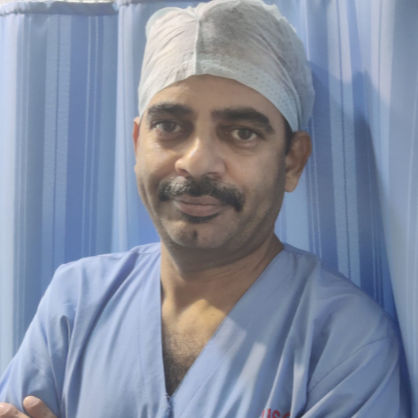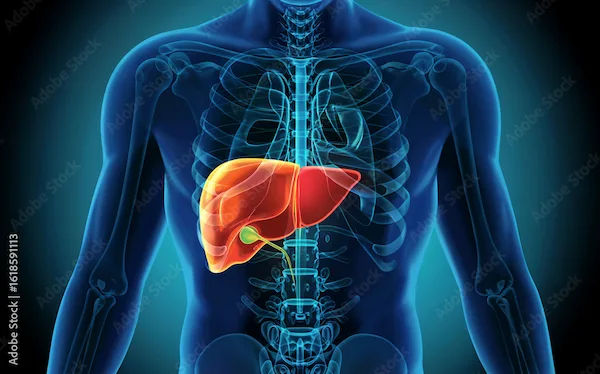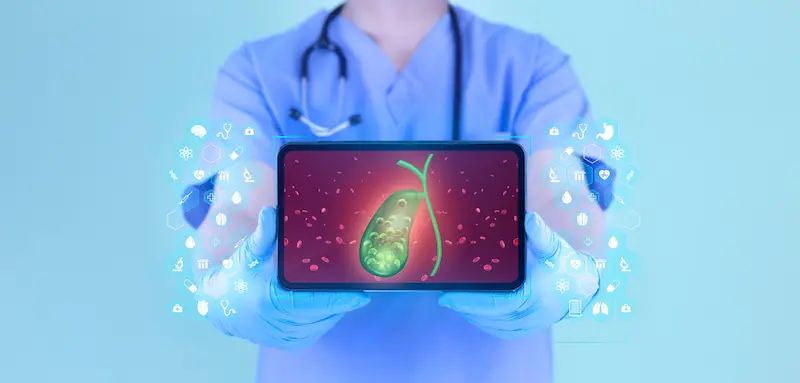Guide to Get Rid Gall Bladder Stones
Learn safe and effective ways to treat and remove gallbladder stones, including symptoms, treatment options, and recovery tips.

Written by Dr. Mohammed Kamran
Reviewed by Dr. Shaik Abdul Kalam MD (Physician)
Last updated on 3rd Oct, 2025

Introduction
That sudden, sharp pain in your upper right abdomen can be alarming, and it might point to a common yet painful condition: gallstones. If you've been diagnosed or suspect you have them, your primary question is likely, "How can I get rid of these gall bladder stones?" This guide is designed to walk you through everything you need to know, from understanding what gallstones are to evaluating all your treatment options. We'll demystify the medical procedures, separate fact from fiction regarding natural remedies, and provide actionable steps for managing your health. Our goal is to empower you with knowledge so you can have an informed discussion with your healthcare provider. Remember, while lifestyle changes can support gallbladder health, seeking a proper diagnosis from a doctor on Apollo24|7 is the crucial first step toward safe and effective treatment.
Understanding Gallstones: The First Step to Getting Rid of Them
Before diving into removal methods, it's essential to understand what you're dealing with. Your gallbladder is a small, pear-shaped organ located beneath your liver. Its main job is to store and concentrate bile, a digestive fluid produced by the liver that helps break down fats. Gallstones are hardened deposits that form inside the gallbladder when there's an imbalance in the substances that make up bile, such as cholesterol or bilirubin.
What Are Gallstones Exactly?
Imagine bile as a complex soup. Under normal conditions, the ingredients are balanced and dissolved. However, if there's too much cholesterol or not enough bile salts, the cholesterol can crystallise, eventually forming stones. Similarly, if your liver produces too much bilirubin (a compound from the breakdown of red blood cells), it can lead to the formation of pigment stones. These stones can be as small as a grain of sand or as large as a golf ball, and you can develop a single large stone or hundreds of tiny ones.
The Two Main Types: Cholesterol vs. Pigment Stones
Understanding the type of stone can sometimes influence treatment decisions.
- Cholesterol Stones: These are the most common type, accounting for about 80% of gallstones. They are primarily made
of hardened cholesterol and are typically yellow-green in color. - Pigment Stones: These smaller, darker stones are made of bilirubin. They are more common in individuals with certain
medical conditions, such as liver cirrhosis, biliary tract infections, or hereditary blood disorders like sickle cell anaemia.
Recognising the Signs: When to Seek Help
Not all gallstones cause problems. However, when a stone blocks one of the ducts that bile flows through, it can lead to
a gallstone attack, also known as biliary colic.
Common Symptoms of a Gallstone Attack
The hallmark symptom is sudden and rapidly intensifying pain in the upper right portion or centre of your abdomen.
This pain can also radiate to your right shoulder or back. An attack often occurs after a heavy, fatty meal and can last
from several minutes to a few hours. Other symptoms may include:
- Nausea and vomiting
- Bloating and indigestion
- Fever or chills (indicating an infection)
- Yellowing of the skin or eyes (jaundice), which signals a blockage in the common bile duct
Unique Insight: The pain of a gallstone attack is often mistaken for a heart attack or severe acid reflux. If you
experience intense, unexplained abdominal pain, especially with fever, it's a medical emergency. Consulting a doctor
online with Apollo24|7 can provide immediate guidance on whether you need to visit an emergency room.
Silent Stones: When Gallstones Show No Symptoms
Many people have "silent stones" that are discovered incidentally during an ultrasound or X-ray for another condition.
These asymptomatic stones typically do not require treatment, as the risk of complications is low. The focus then shifts
to monitoring and preventive lifestyle changes.
Consult a General Surgeon for the best advice
Getting a Proper Diagnosis: Confirming Gallstones
You cannot reliably self-diagnose gallstones. A proper medical diagnosis is non-negotiable. If you describe symptoms of a gallstone attack, your doctor will likely recommend an abdominal ultrasound. This is the most common and effective imaging test to visualise gallstones. In more complex cases, other tests like a CT scan, HIDA scan (to assess gallbladder function), or an MRCP (Magnetic Resonance Cholangiopancreatography) may be used to get a clearer picture of the bile ducts.
Medical Treatments to Rid Gall Bladder Stones
Once diagnosed, the treatment path depends on your symptoms, the size and type of stones, and your overall health.
Cholecystectomy: Surgical Removal of the Gallbladder
For symptomatic gallstones, the most common and definitive treatment is a cholecystectomy, the surgical removal of the gallbladder. This is considered the gold standard because it prevents future stones from forming. It's important to know that you can live a healthy life without your gallbladder; bile will simply flow directly from your liver into your small intestine.
Laparoscopic Cholecystectomy (Keyhole Surgery)
This is the most frequently performed procedure. The surgeon makes several small incisions in your abdomen and uses a tiny camera (laparoscope) and specialised instruments to remove the gallbladder. Benefits include:
- Less postoperative pain
- Shorter hospital stay (often outpatient)
- Faster recovery and return to normal activities
- Minimal scarring
Open Cholecystectomy
This involves a larger incision in the abdomen. It's less common and is typically reserved for complex cases, such as when there is significant inflammation, infection, or scarring from previous surgeries. The recovery time is longer.
Non-Surgical Procedures for Stone Removal
In certain situations where surgery poses a high risk, non-surgical options may be considered. These are generally not as effective as surgery for preventing recurrence.
ERCP (Endoscopic Retrograde Cholangiopancreatography)
This procedure is primarily used if a stone is lodged in the common bile duct, causing jaundice or pancreatitis. A gastroenterologist uses an endoscope (a long, flexible tube with a camera) passed through the mouth down to the bile duct to locate and remove the stone. It doesn't remove the gallbladder itself, so stones can still form again.
Oral Dissolution Therapy
This involves taking medications containing bile acids (like ursodiol) to slowly dissolve small, cholesterol-based gallstones. The process can take months or years, and stones often return once the medication is stopped. It's only suitable for a small subset of patients with functioning gallbladders and small, radiolucent stones.
Natural Approaches and Lifestyle Management
While medical procedures are necessary for symptomatic stones, lifestyle plays a crucial role in prevention and managing silent gallstones.
Dietary Changes to Support Gallbladder Health
The goal is to reduce the workload on your gallbladder and prevent bile from becoming oversaturated with cholesterol.
- Increase Fibre: Eat plenty of fruits, vegetables, and whole grains.
- Choose Healthy Fats: Incorporate unsaturated fats like those found in olive oil, avocados, and nuts. Avoid saturated
and trans fats. - Stay Hydrated: Drink plenty of water throughout the day.
- Eat Regular Meals: Don't skip meals, especially breakfast. Fasting can increase the concentration of cholesterol in bile.
- Maintain a Healthy Weight: Lose weight gradually if needed. Rapid weight loss is a known risk factor for gallstone formation.
The Truth About "Gallbladder Flushes" and Natural Remedies
You may have heard of "gallbladder flushes" involving olive oil, lemon juice, and herbs, claiming to "flush out" stones. Medical experts strongly caution against these. The "stones" people see in their stool after a flush are typically globs of oil, juice, and salt that have congealed, not actual gallstones. These flushes can be dangerous, potentially causing gallstone attacks, pancreatitis, or severe dehydration. Always discuss any natural remedy with your doctor before trying it.
Conclusion: Taking Control of Your Gallbladder Health
Dealing with gallstones can be a painful and worrying experience, but modern medicine offers clear and effective paths to relief. The journey to get rid of gall bladder stones begins with understanding your condition and partnering with a healthcare professional to choose the right treatment for your specific situation. Whether it's managing silent stones through a healthy lifestyle or opting for surgery to eliminate painful symptoms, you have the power to take control. If you suspect you have gallstones or have been diagnosed and are weighing your options, booking a consultation with a specialist on Apollo24|7 is the safest and most informed next step you can take for your long-term digestive health.
Consult a General Surgeon for the best advice
Consult a General Surgeon for the best advice

Dr Karthik Maripeddi
Urologist
13 Years • MBBS MS FMAS MCh URO(OSM)
Hyderguda
Apollo Hospitals Hyderguda, Hyderguda

Dr. Premkumar Balachandran
General and Laparoscopic Surgeon
22 Years • MBBS, MS, FICS, DMAS, FMAS, FRS, FIAGES, Dip. ALS, FCP
Chennai
Apollo Hospitals Greams Road, Chennai
(175+ Patients)

Dr. Kiran K J
General and Laparoscopic Surgeon
18 Years • MBBS, MS, FMAS, DMAS (Fellow & Dip in Min. Access surg.), FALS- Bariatric & Robotic Surgery
Bengaluru
Apollo Hospitals Bannerghatta Road, Bengaluru
(50+ Patients)
Dr. Naziya Rahim Bhatia
General Surgeon
7 Years • MBBS ,MS
Bengaluru
Apollo Clinic, Sarjapur Road, Bengaluru

Dr. Avaneesh Hasiza
General Surgeon
22 Years • MBBS, DNB - General Surgery, MS - General Surgery
Gurugram
Utkarsh Surgical Centre, Gurugram
Consult a General Surgeon for the best advice

Dr Karthik Maripeddi
Urologist
13 Years • MBBS MS FMAS MCh URO(OSM)
Hyderguda
Apollo Hospitals Hyderguda, Hyderguda

Dr. Premkumar Balachandran
General and Laparoscopic Surgeon
22 Years • MBBS, MS, FICS, DMAS, FMAS, FRS, FIAGES, Dip. ALS, FCP
Chennai
Apollo Hospitals Greams Road, Chennai
(175+ Patients)

Dr. Kiran K J
General and Laparoscopic Surgeon
18 Years • MBBS, MS, FMAS, DMAS (Fellow & Dip in Min. Access surg.), FALS- Bariatric & Robotic Surgery
Bengaluru
Apollo Hospitals Bannerghatta Road, Bengaluru
(50+ Patients)
Dr. Naziya Rahim Bhatia
General Surgeon
7 Years • MBBS ,MS
Bengaluru
Apollo Clinic, Sarjapur Road, Bengaluru

Dr. Avaneesh Hasiza
General Surgeon
22 Years • MBBS, DNB - General Surgery, MS - General Surgery
Gurugram
Utkarsh Surgical Centre, Gurugram
More articles from Gallbladder Stones
Frequently Asked Questions
1. Can you pass a gallstone on your own?
It is possible to pass a very small stone, but it can be extremely painful and risky. A stone passing into the bile duct can cause a blockage, leading to jaundice or pancreatitis, which are serious medical conditions. Passing stones is not a reliable treatment method.
2. What does a gallbladder attack feel like?
It typically feels like a sudden, steady, and severe pain in the upper right abdomen or centre, just below the breastbone. The pain may radiate to the back or right shoulder and is often accompanied by nausea. It usually occurs after eating a fatty meal.
3. What is the recovery time after gallbladder surgery?
For laparoscopic surgery, most people can return to normal activities within one to two weeks. Recovery from open surgery takes longer, typically four to six weeks. Your surgeon will provide specific guidelines based on your case.
4. Are there specific foods I should avoid to prevent gallstone pain?
Yes, it's best to avoid high-fat, greasy, and fried foods, as they stimulate the gallbladder to contract, which can trigger pain if stones are present. Processed foods and sugary snacks can also contribute to the problem.
5. Is gallbladder stone surgery safe?
Laparoscopic cholecystectomy is a very common and safe procedure. As with any surgery, there are risks, such as infection or bleeding, but serious complications are rare. It is one of the most frequently performed abdominal surgeries worldwide.


